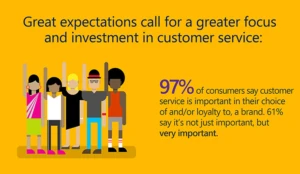
3 Striking Statistics from Microsoft's 2016 State of Global Customer Service Report
No matter where you are in the world today, one thing is for sure. Expectations for customer service have grown over the past few years: around convenience, speed, agent knowledge and insights – and by far around channel availability and digital transformation.
This year, Microsoft’s annual customer service preferences and expectations survey polled 5,000 consumers across Brazil, Germany, Japan, the United Kingdom and the United States and found some interesting commonalities, as well as distinct differences between locations. As a bonus to our polling, we also found some fascinating trends related to age groups – is what they say about millennial customer service expectations all true?
As customer service and the customer experience become key differentiators for brands and organizations across all industries around the world, it has never been more important to know as much as you can about these expectations, perceptions, preferences and trends so that your organization can not only move forward, but ahead when it comes to customer service and engagement.
Here are three striking statistics from Microsoft’s 2016 State of Global Customer Service Report:
1. 56% of global consumers say they have higher expectations for customer service now than they had a year ago. This number jumps to 68% for 18 – 34-year-olds.
2. 48% of global consumers don’t believe most brands take action on customer feedback.
3. 77% of global consumers have a more favorable view of a brand that offers proactive customer service alerts and notifications.
Get the Report
Whether you’re in customer service, marketing, sales, IT – or especially if you’re the CEO, CFO or CDO – you’ll be fascinated by the results revealed by Microsoft’s new 2016 Global State of Customer Service Report which polled 5,000 consumers across Brazil, Germany, Japan, the UK and the US on their customer service preferences and expectations.
The variations based on both geography and age will either confirm or totally change the way you think about, invest in, improve and incorporate customer service as a foundation of your brand or organization.
To access the full Microsoft 2016 State of Global Customer Service Report, which surveyed 5,000 consumers across Brazil, Germany, Japan, the United Kingdom and the United States on their customer service expectations and preferences, click here.




